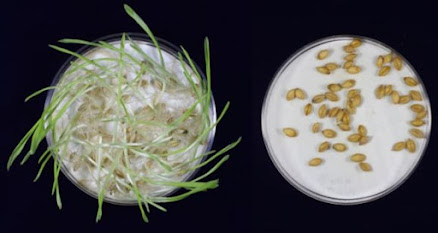In an effort to understand how bacteria control and regulate this adaptation, University of Michigan researchers are examining how RNA polymerase—the enzyme that transcribes genetic information from DNA onto RNA—slows during transcription in a process called transcriptional pausing.
They found that a protein called N-utilizing substance A, or NusA, in concert with another control element called a riboswitch, fine-tunes the transcription speed in order to regulate gene expression. Gene expression is the process by which genetic information is converted into the building blocks of the bacterium.
The researchers say their work, published in the Proceedings of the National Academy of Sciences, expands our general understanding of the transcription process in bacteria, and could provide a target for developing new antibiotics.
“NusA is specific to bacteria. It’s not found in human cells or in yeast, so that it can be a target for the design of new antibiotics or drugs that will affect pathogenic bacteria but not our own cells,” said Adrien Chauvier, lead author of the study and postdoctoral researcher in the Nils Walter laboratory in the U-M Department of Chemistry and the Center for RNA Biomedicine.
When bacteria undergo gene expression, RNA polymerase synthesizes RNA. As RNA is produced, it undergoes a process called co-transcriptional RNA folding, adopting a dynamic structure that researchers think influences the timing of gene expression. To examine this process, Chauvier, together with undergraduate researcher Pujan Ajmera, looked at an element called a riboswitch, a segment of the transcribed messenger RNA that regulates gene expression through modulation of the RNA conformation. This structural change is triggered when a specific metabolite or ion called a “ligand” binds to the riboswitch.

















.jpg)
